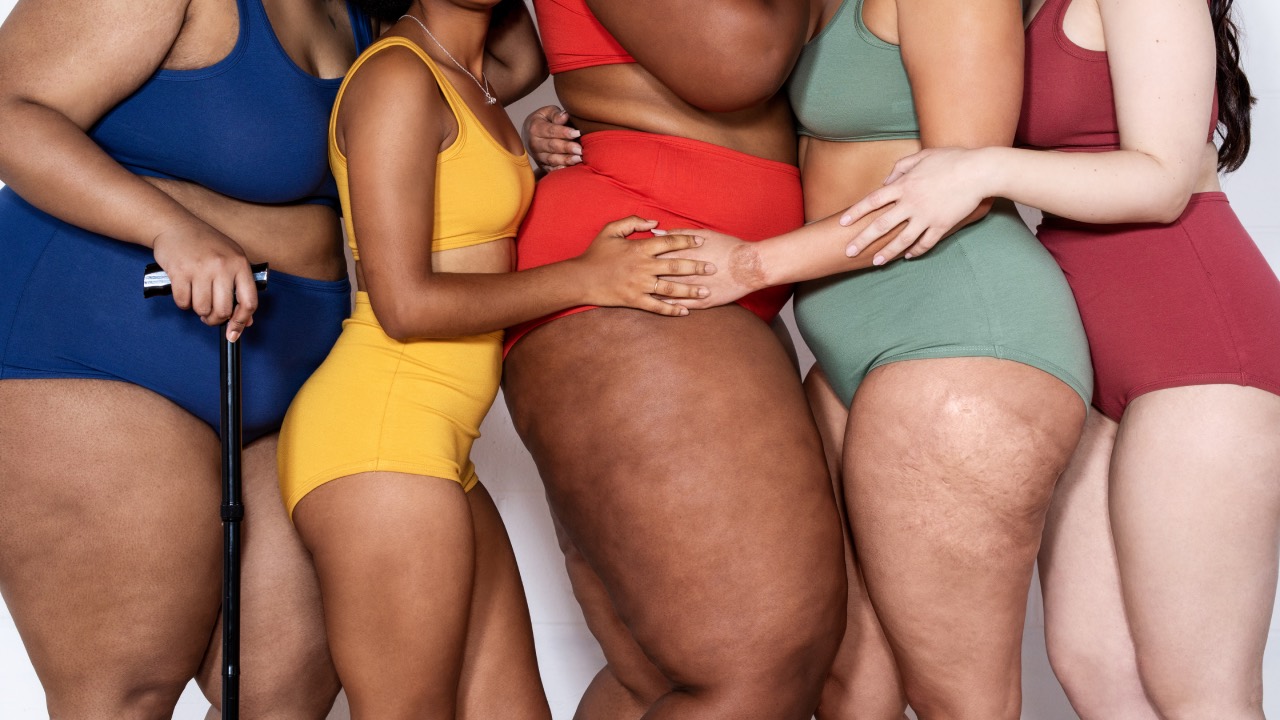8 things dermatologists wish women knew about cellulite

What is cellulite?
Cellulite is the term for lumpy, dimpled flesh on the thighs, hips, buttocks and abdomen. It can also appear on the arms and breasts. “Cellulite is enlarged packets of body fat deep beneath the skin pushed against the vertical connective tissue that surrounds fat cells,” says dermatologist, Dr Dendy Engelman.
“When the fat cells expand, it limits the space under the skin and puts pressure on the connective tissue. The pressure forces the fat against the top layers and creates the dimpled look.” So, before you try the latest and sometimes unfounded cellulite treatment, our skin experts explain what you need to know.
Almost every woman has cellulite
“Cellulite is very common – 93 per cent of women have it,” says Dr Engelman. “The first thing women with cellulite need to know is that they aren’t alone,” echoes dermatologist, Dr Bruce Katz. “The vast majority of women have at least some of these dreaded pockets of fat.”
Cellulite is harmless and not a disease
Although we may not like how it looks, cellulite is a completely normal and benign condition. “Cellulite is not the disease the media would have us think,” says dermatologist, Dr Tanya Kormeili. Cellulite doesn’t hurt, and it also doesn’t affect overall physical health.
Exercise can help reduce cellulite
“Since cellulite is fat, excess fat can contribute to the appearance of cellulite. Increasing muscle tone and exercising can minimise cellulite,” says Dr Engelman. Dr Katz agrees: “Generally, the key to alleviating cellulite is weight loss combined with building muscle. Muscle lies below the pockets of fat that strain against the skin and create cellulite. Smoothing the muscle should lead to smoother skin. Most women carry cellulite in their thighs and buttocks, so workouts emphasising leg lifts, squats and lunges tend to be most effective.”
Dr Katz says that in his experience, lifestyle changes alone aren’t enough to reduce cellulite to most women’s satisfaction. Some cellulite treatments are nonsurgical and require very little downtime.
Diet can also affect cellulite appearance
Having a healthy diet is a positive for your body in general but may also reduce the appearance of cellulite. “Antioxidants and omega-3s can be a woman’s best friend in fighting cellulite because they help break fat cells down and strengthen the skin and connective tissue, respectively,” says Dr Katz.
“I recommend foods like flaxseed, dark berries and salmon. Many women patients are also overjoyed to learn that they don’t have to cut out chocolate. Natural cocoa is loaded with antioxidants, so dark chocolate is a welcome part of any anti-cellulite diet.”
Cellulite has a genetic component (woman of any size can have cellulite)
Women who have cellulite tend to have mums, sisters and aunts with cellulite no matter what their body size or shape. Dr Katz says, “One of the biggest misconceptions about cellulite is that losing body fat alone will reduce its appearance. I have treated cellulite in women who are marathon runners and triathletes who still have cellulite. I treated one woman who did the Ironman triathlon in Hawaii four times and still came in to have her cellulite treated.”
Dr Engelman echoes this by saying, “Cellulite is genetic, so while weight can influence the presence of cellulite, even the thinnest women can have it.”
Men rarely get cellulite because of their skin structure
Men, on the other hand, are unlikely to have cellulite; according to the Cleveland Clinic, less than 10 per cent of men are affected by it.
That’s because the support tissue in a woman’s body is softer, likely because women’s bodies have to stretch so much to accommodate a growing baby. Visualise fishnet pantyhose – this is what women’s covering of skin looks like versus men’s covering, which is more like a thick, uniform pantihose holding all the fat in place and not allowing as much herniation.
“This is an anatomical issue with our bodies as women. Not our fault! Biology! As we get older or under the effects of hormones, the fishnet ‘holes’ can get even more permeable with more herniation, and hence cellulite forms,” says Dr Kormeili. “Therefore, creams and fads can’t really correct cellulite unless they could go deep in the skin and repair the fishnet into a thick pair of pantyhose,” she says.
Be wary about expensive "miracle" cellulite treatments
We’ve all seen the super expensive creams and potions that claim to erase cellulite – but are they worth it? “While many treatments claim to be able to improve the appearance of cellulite, the long-term effectiveness of these treatments or their true efficacy is still being investigated.
So, please, don’t waste your hard-earned money on claims that won’t really yield the results you want,” says Dr Kormeili. If cellulite is a true concern, it’s best to contact a board-certified dermatologist to discuss your options as there are several treatments that can help but they require a physician’s intervention.
Caffeine may improve skin's texture
“Most cellulite-fighting creams contain caffeine as their active ingredient, which can be more helpful than you’d imagine when applied religiously,” says Dr Engelman. “This is because of the temporary effects caffeine has on the body, which are actually prolonged to daily effects. It shrinks fat cells by dehydrating them.”
Dr Engelman suggests applying these creams with an aggressive massage or a rolling motion to help aid in the penetration and see better results.
Image credits: Getty Images
This article originally appeared on Reader's Digest.
